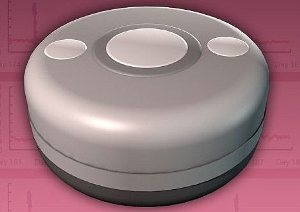Jul 31 2010
A glucose sensing device that is implantable and a wireless telemetry system was developed by bioengineers at the San Diego-based University of California and GlySens.
This device monitors the glucose level in tissues and the data is then transmitted wirelessly to a data recorder. This development has been published as a paper in the journal Science Translational Medicine. This paper emphasizes the use of this glucose sensor in animals for more than one year. The implantable device can be advisable to diabetes patients, as a replacement to short-span needle-like glucose sensors, upon human clinical trials and FDA approval.
 Glucose sensor
Glucose sensor
The amount of oxygen diffused from tissues to the sensor is consumed in accordance with the concentration of glucose diffused, by the enzymatic activity of glucose oxidase. The oxygen left over by this catalytic reaction is quantified and compared to the oxygen recorded by an oxygen reference sensor to determine the glucose concentration. This oxygen sensing system, with a pair of sensors, eliminates modulations in the blood flow to the tissues. The sensor used in the study on pigs is about 5/8 inch thick and has a diameter of 1.5 inches.
In animal trials, the implanted sensors send information to an external data recorder. It can indicate a drop in glucose level by sending information to a phone, apart from intensive monitoring the whole day. Glucose readings from the sensors help in adjusting the rate of insulin flow from the insulin pumps.
According to David Gough, Bioengineering Professor, UC San Diego, the oxygen detection property of these sensors remains unaffected by tissue encapsulation for more than 500 days. The device records glucose successfully in animals and upon satisfactory Clinical Trials in humans in the future, it can be prescribed by physicians, added Professor Gough. These sensors can be used by Type 1 and Type 2 diabetes patients. These sensors help adjusting the dosage of insulin and prevent hypoglycemia in Type 1 patients, whereas it remodels the exercise and diet schedule in Type 2 diabetes patients. It also plays a vital role in regulating the blood glucose levels.